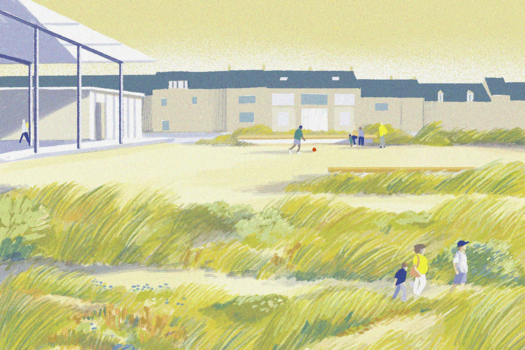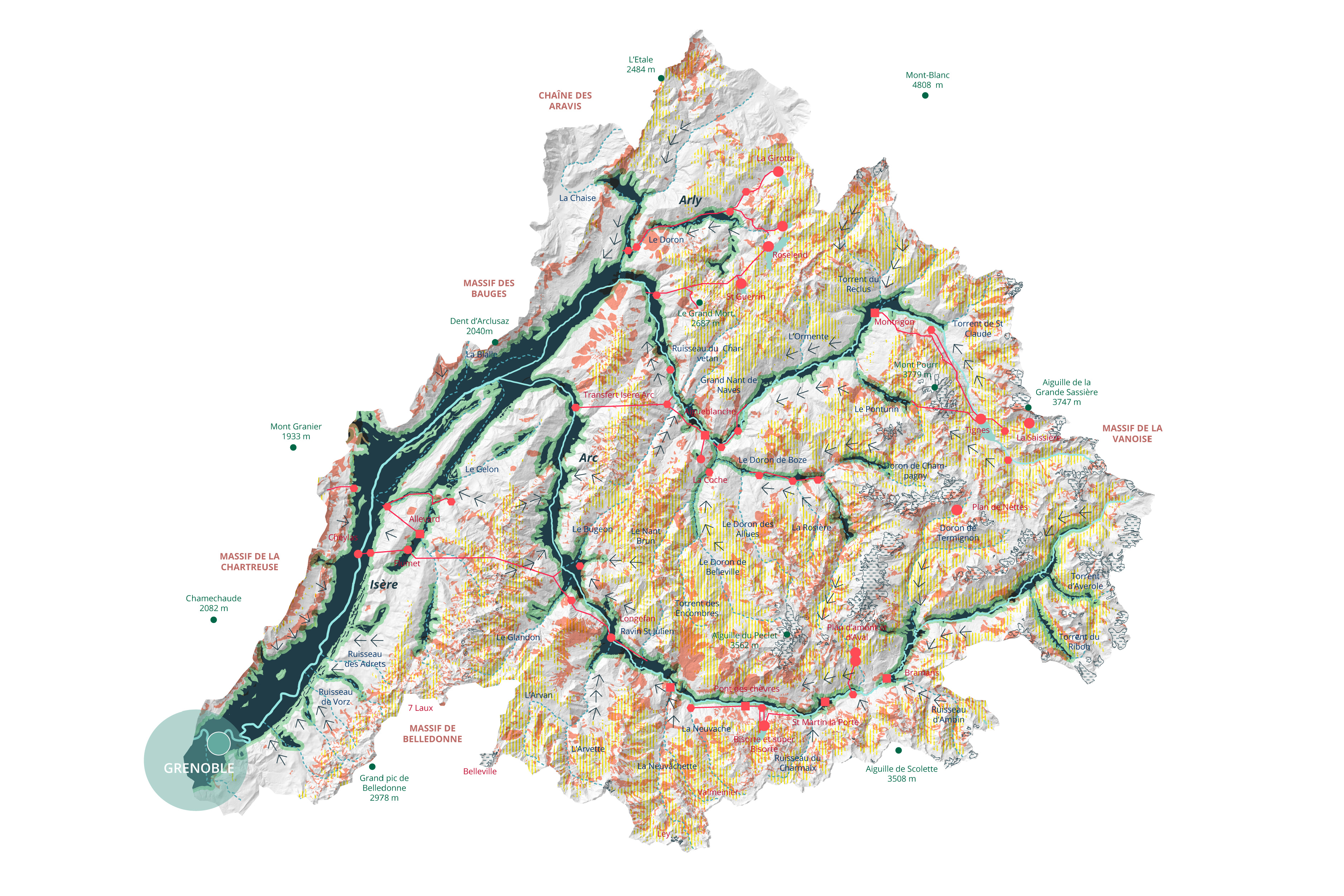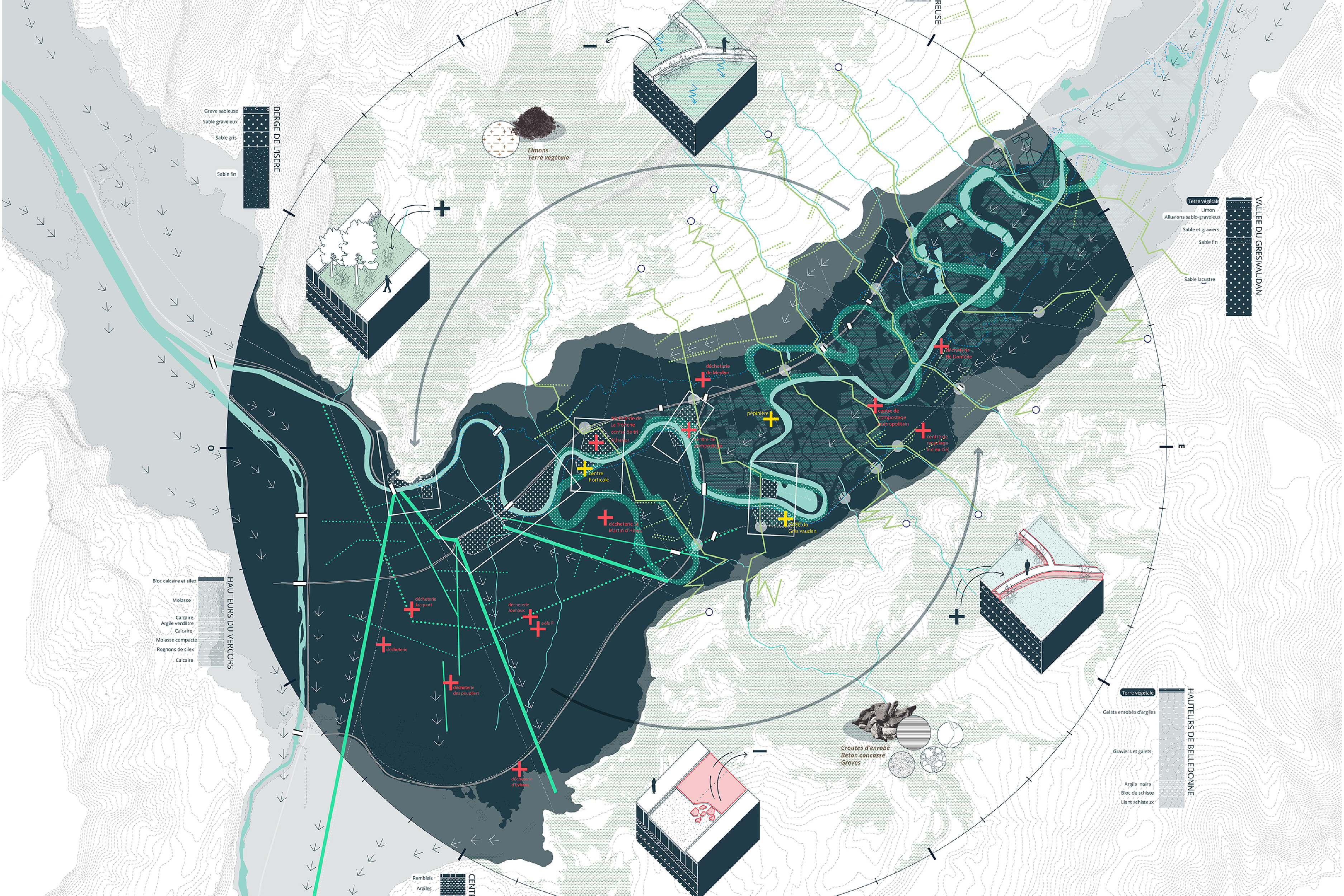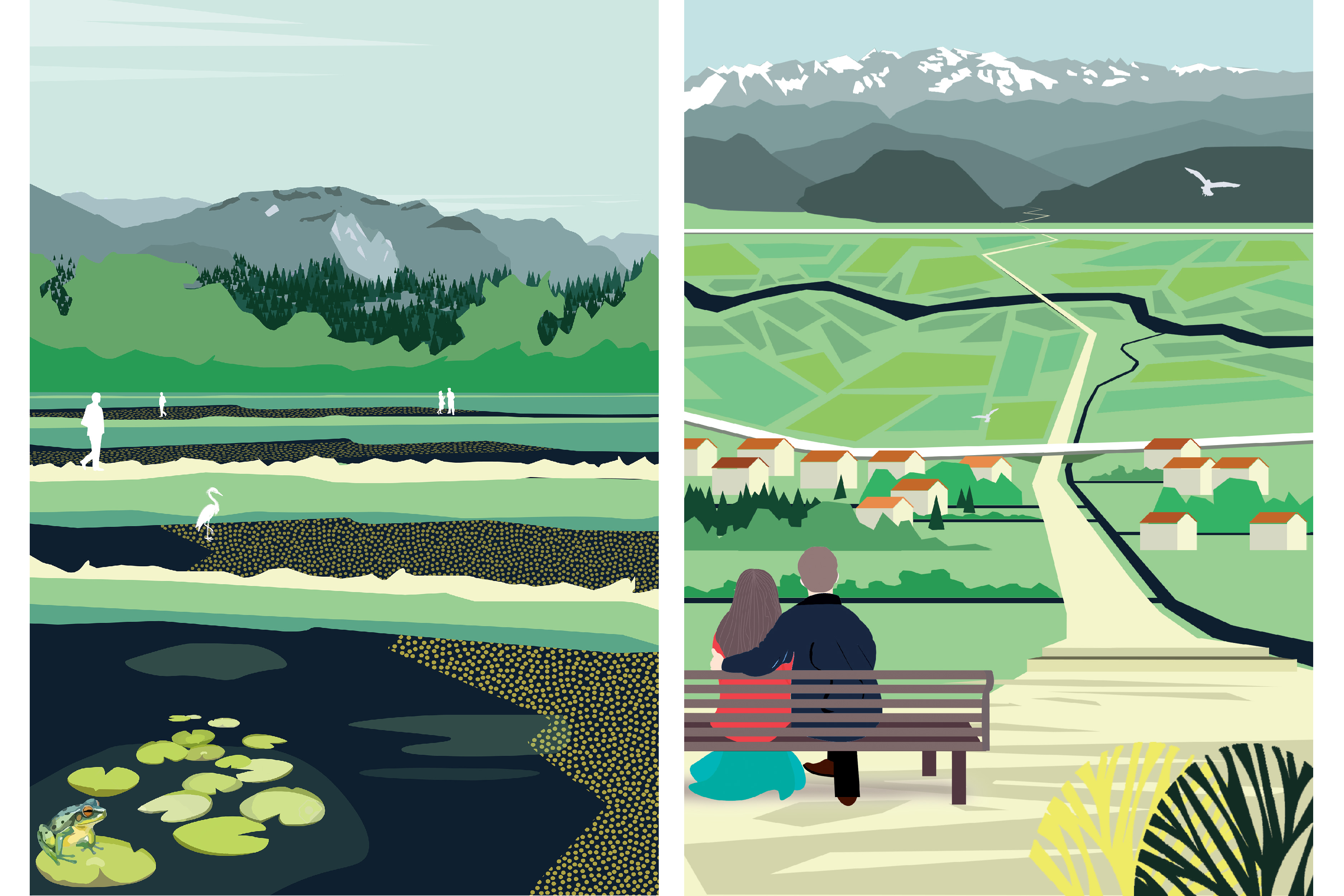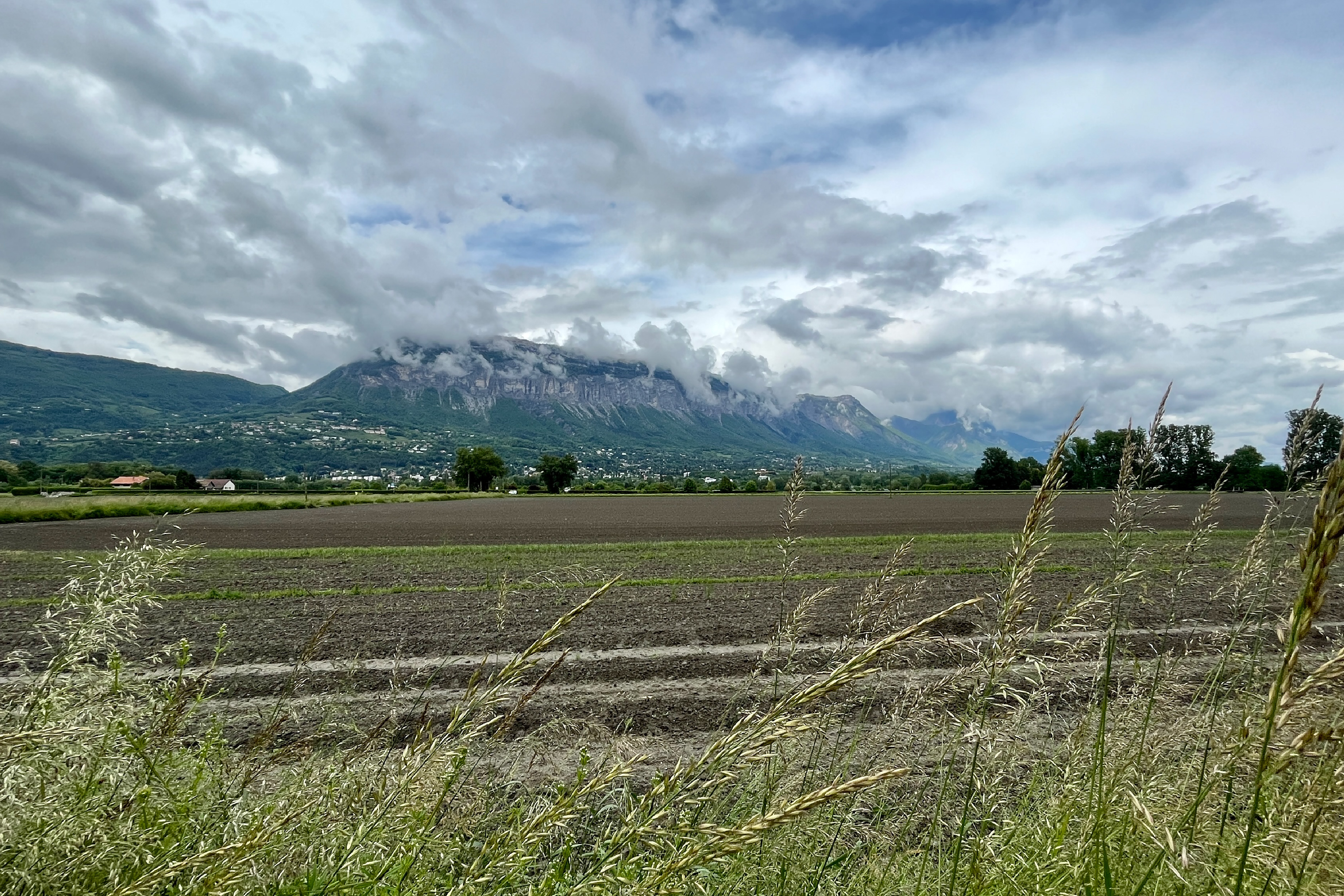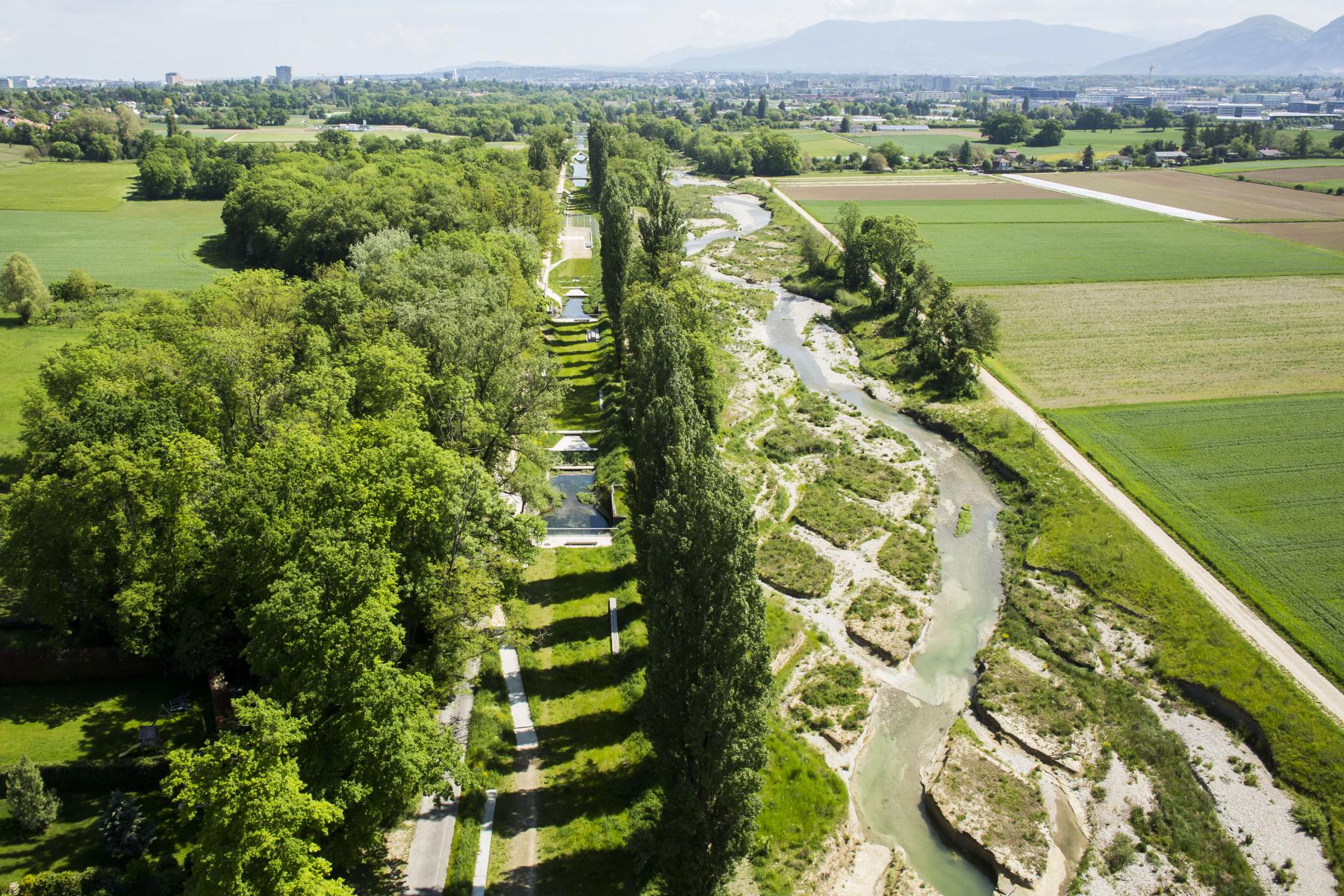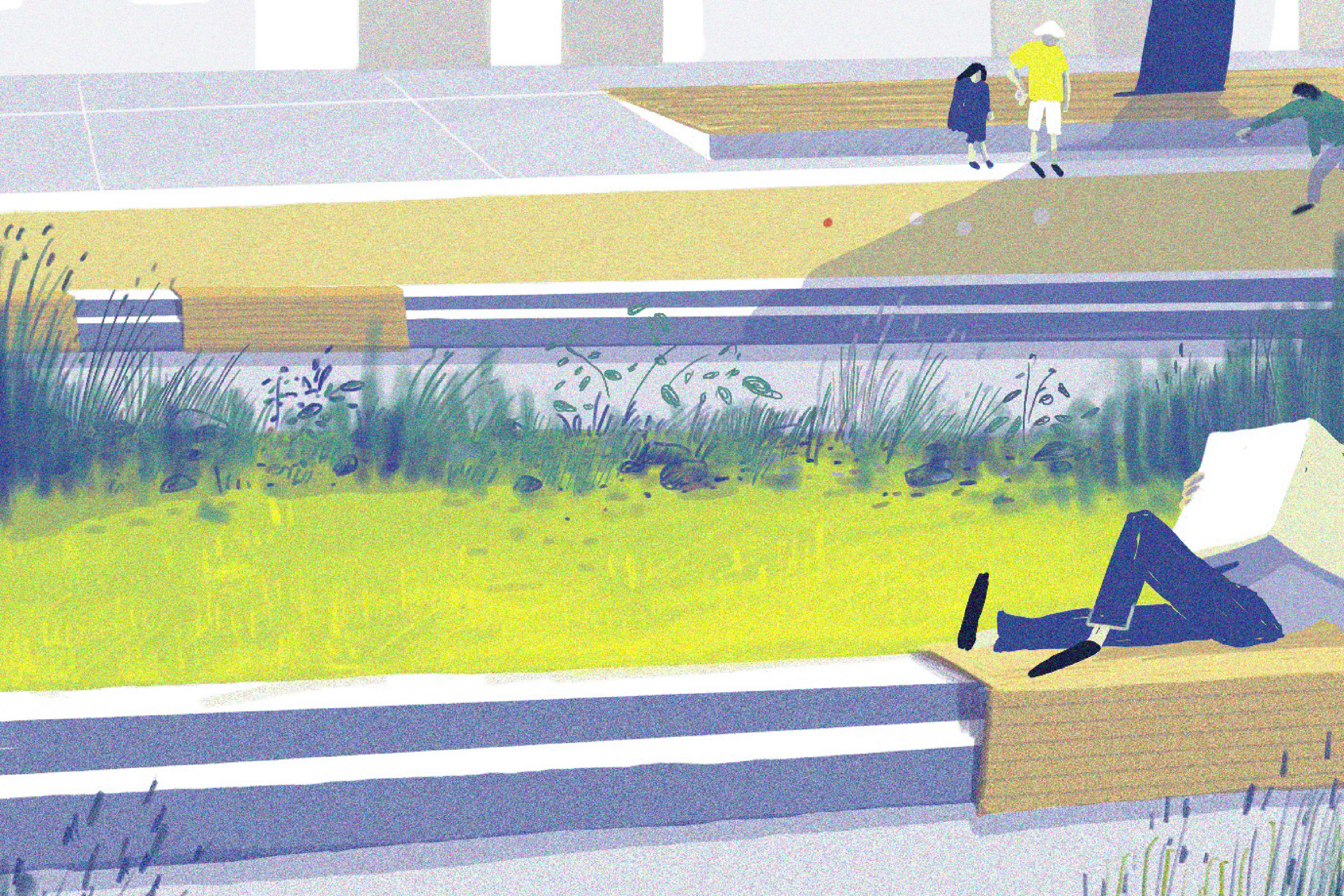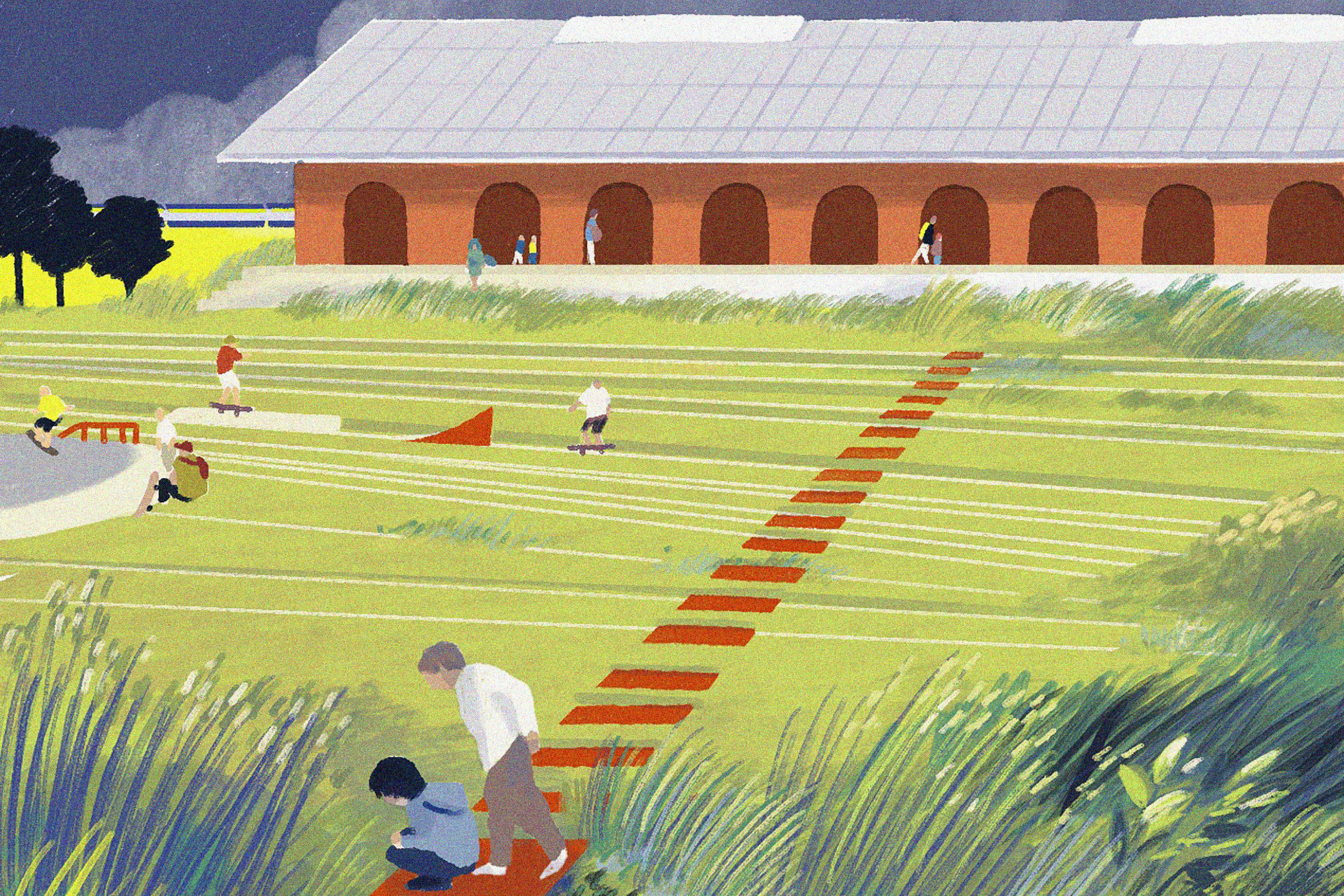SOLS MOBILES
Grenoble Alpes Métropole (FR) - Winner

TEAM DATA
Associate: Iris Chervet (FR) – architect urbanist,
Contributors: Amaury Bech (FR), Laura Lepesteur (FR) – architects urbanists
ic@irischervet.fr
www.irischervet.fr/
See the complete listing of portraits here
See the site here
TEAM PORTRAIT
INTERVIEW
Click on the images to enlarge
1. How do you define the main issue of your project in relation with the theme “Living Cities Imagining architecture taking care of the milieus”? And in which way do you think your project can contribute to an ecological and/or social evolution?
The proposition of MOBILES SOILS raises the question of the identity of the ‘Parc des Boucles de l’Isère’, its role within Grenoble’s metropolitan area and its resilience in the face of climate change. The project takes an environmental approach, designing new synergies between the lithosphere, hydrosphere and atmosphere, and testing their capacity to evolve.
The goal is to transform flooding risk into resource :
- A soil resource : the park becomes functional, as it recovers silt carried by floods, to produce local topsoil, used to demineralise the town centre
- A social resource : the future “Parc des Boucles de l’Isère » will become a climatic refuge for all inhabitants, a “cool island” for the metropolitan scale.
2. How did the issues of your design and the questions raised by the site mutation meet?
The project is being carried on 3 overlapping spatial and temporal scales to understand the mutations of the site :
- The scale of the ‘Isère’ watershed, which highlights the major environmental and climatic issues, leading to 2 scenarios, corresponding to 2 time scales : the increase in hydraulic risks by 2050, then the drought in a post-glacial future by 2100.
- The scale of Grenoble metropolitan area and the north-east polarity, with the development of a new territorial metabolism, recreating landscape and functional relationships between the city centre and the park.
- The local scale of the park, which proposes 4 urban-landscape figures, supporting the new metabolism, and associated with spatialized actions on the edge between town and park.
PROJECT:



MOBILE SOILS illustrates the multi-scalar approach taken by the Atelier Iris Chervet in its projects, based on in-depth analysis of natural dynamics. Projects linked to climate change adaptation of territories, in particular regarding hydraulic risks, are the common thread running through the office's work. For instance, Iris Chervet explored these themes during the Europan 15 competition in Saint-Omer, where the town, located on the edge of a marsh, sought to limit the risks of flooding while taking advantage of the presence of water to make it productive. For the project MOBILE SOILS, we first relied on geological, pedological and hydrological data from BRGM. Our project strategy has drawn on both the theoretical contributions of researchers such as C. Cavalieri with The language of water (2019), and operational experience such as the renaturation of the Aire in Geneva led by G. Descombes.
SITE:
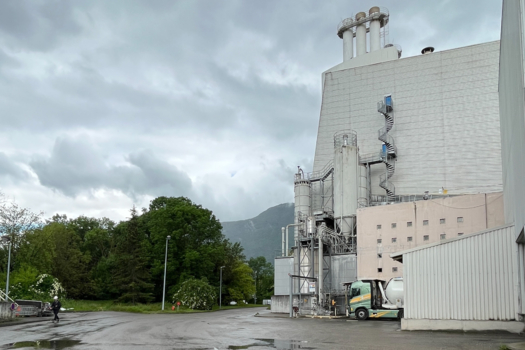


The project combines several spatial and temporal scales: it combines one-off actions that can be implemented quickly, with more far-reaching spatial transformations over the long term. Some propositions, such as the creation of sediment marshes, are forward-looking and could be tested on a small scale initially, as part of an action-research process for example. In the shorter term, the figure of the "archaeological loops" could be the basis for a landscape scenography project. Furniture and signage are proposed to reveal the old meanders of the river, which have now dried up. The aim of these one-off initiatives is to make local residents more aware of the risks and to foreshadow future transformations within the Park, while at the same time using very limited resources.
REFERENCES:

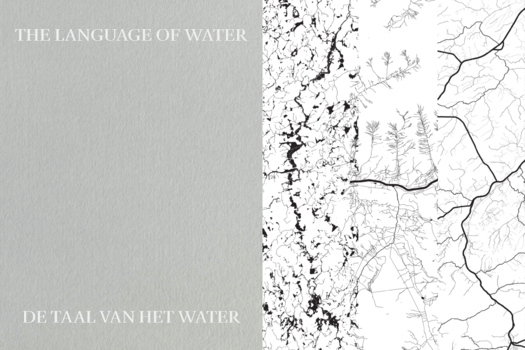

The team is composed by three members of the office “Atelier Iris Chervet”, : - Iris Chervet, architect, urban planner and landscaper, founder of the office, - Amaury Bech and Laura Lepesteur, both architect and urban planner working at the office. When composing the team, we wished to associate Iris Chervet’s experience with Europan competitions, with the diverse fields of expertise of each member of the team (geography, urban planning, risk management). We took the opportunity of this competition to strengthen teamwork in the office, and to further our respective knowledge and understanding of the theme of "living cities".
6. How could this prize help you in your professional career?
Atelier Iris Chervet is a young office that succeeded in implementing projects through Europan competitions. We know what a “springboard” effect this competition can have for young professionals and we appreciate the visibility and partnerships that Europan enables with the city representatives, as much as with the other teams.
TEAM IDENTITY
Legal status: SAS
Team name: Atelier Iris Chervet
Average age of the associates: 33 years old
Has your team, together or separately, already conceived or implemented some projects and/or won any competition? if so, which ones?
Iris Chervet has already won the Europan 13 competition in Saint-Brieuc (FR), and Europan 15 in Saint-Omer (FR). The implementation process has been fundamental to the agency's work, leading to workshops, urban studies and project management for public spaces. The agency also won a competition for the development of the Ostend waterfront (BE) in 2016.
WORKS:


